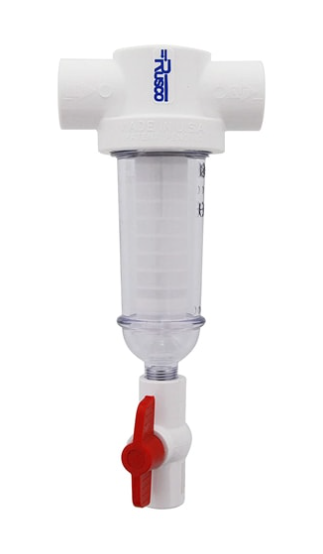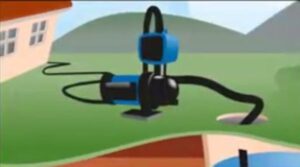4 Ways to get rid of Sand in Well Water
1. Well Inspection – Get your well inspected by a professional for any damages to casing, screen or pressure pump. The contractor will also check the pump’s position, well cap, and area around the well.
2. Centrifugal Sand Separators – Centrifugal sand separators are installed directly over the water pressure tank to remove sand and sediment from well water. The success rate for centrifugal sand separator is 98%. The removed sand is captured inside the machine which is then removed via backwash cycle or manually.
3. Sediment Filters – Sediment filters are commonly used to remove sand from well water. There are various types of sediment filter available but the best one is the spin down sediment filter. A spin down filter can be flushed to remove the captured sand.
Recommended Sediment Filter: SpringWell’s Spin Down Sediment Filter

It is the best filter to remove sand from well water. The filter has a 100-micron rating allowing it to remove sand, dirt, silt, and debris from well water. The filter delivers a 15 gallons per minute flow rate that is best for an average American family.
The transparent housing makes it easier to maintain the unit and asses when you need to replace the cartridge.
4. Water Filters –Various water filters have a sediment filter to remove smaller particles in well water. The sediment cartridge’s micron rating varies from one system to another. Some water filters like RO filters have 0.0001 micron rating. These filters remove up to 99% of contaminants found in well water.
Reasons behind Sand and Sediment in Well Water
Well Pump Position – A well pump positioned too low can pump sand, sediment, and dirt along the water. This can damage the pump, plumbing, pressure tank, and water softener. Make sure you check the well pump’s position and move it upward.

Extra Large Well Pump – A large well (more powerful than what your well needs) exerts more suction force and pulls sand along.
Damaged Well Screen – A damaged well screen will not stop sediment, sand, dirt, and small stones from entering the well. The extra sand will be pumped into the plumbing system.
Damaged Well Cap, Casing, or Water Pipes – If the well cap, casing, or water pipes are damaged, sand and sediment can easily enter your plumbing system.
Improper Well Construction – Water wells constructed without following local laws can have a high concentration of sand in them. Any carelessness in well location, finishing and testing can lead to a high sediment in water.
Faulty Sediment Filter – Sediment filter is used to remove sand and suspended particles. Any problem with sediment filter like clogging or expired cartridge can stop removing sand.
Do I Need to Get Water Tested for Sand?
It is not necessary to test well water for sand but you can test it to identify the contaminants. It will help you select the right treatment method for your well water.
Problems Caused by Sand in Well Water
Sand and sediment in well water can cause the following problems.
- Reduced water pressure
- Clogged plumbing system
- Damage to plumbing fixtures and water tanks
- Damage to water appliances, filters, and softeners
- Unsightly water
Final Words
Sediment in well water is usually harmless to our health. However, it can wreak havoc on the plumbing system, water appliances, and drastically reduce the flow rate. Getting it out of water is important to maintain well water quality.
